1840: Akaroa
August 19, 2020
By AHNZ
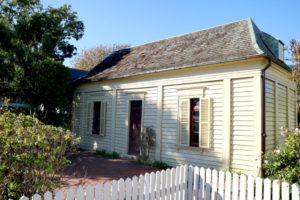 Today in New Zealand history, 180 years ago, 19 August, 1840, the settlement of Akaroa began. At this point, New Zealand was up for grabs with various settlements and colonies yet to be collected up under the umbrella of William Hobson’s fledgling hegemony.
Today in New Zealand history, 180 years ago, 19 August, 1840, the settlement of Akaroa began. At this point, New Zealand was up for grabs with various settlements and colonies yet to be collected up under the umbrella of William Hobson’s fledgling hegemony.
George Fleuret, a sailor in the French whaling fleet, is the man whose heart more than any other beat for a French colony at Akaroa. Fleuret was always at the forefront of Akaroa Colony from his very first visit onward. It was only a matter of time before these regular visitors resolved to set up a permanent settlement on the land after the fashion of their Australian counterparts who set up shore stations. New Zealand and the hunt was the better part of the job so why sail all the way to France and back? Fleuret wanted to stay put.
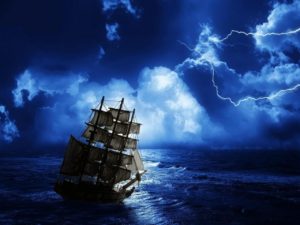 The desire shared by Fleuret culminated in the negotiation by his captain, Jean-François Langlois, master of a French whaler, Cacheloe, for a big block of land from the Maoris¹. Captain Langlois had to refuse his carpenter, Fleuret, permission to remain behind alone on their new land at this point, August 1838, but they would return².
The desire shared by Fleuret culminated in the negotiation by his captain, Jean-François Langlois, master of a French whaler, Cacheloe, for a big block of land from the Maoris¹. Captain Langlois had to refuse his carpenter, Fleuret, permission to remain behind alone on their new land at this point, August 1838, but they would return².
In the meantime, George Angas, founding statesman at South Australia colony heard what the French were up to across the ditch in New Zealand. He quickly set wheels in motion leading to Captain William Hobson’s visit and eventual take-over of New Zealand for the British. (Before too long Angas’ son, George Junior, came to see New Zealand for himself.)
“In recognition of his efforts in making New Zealand an English colony rather than a French colony, Angas was offered a knighthood and a then baronetcy, but he declined both.”- Wiki
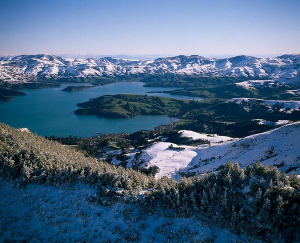 On August 9th, 1840, Captain Langlois and George Fleuret returned to Banks Peninsula which they now considered they owned. A little later, 19 August, they made it to their preferred site which is now called Akaroa. They came aboard Comte de Paris with all the financial and political backing, colonists, stores, and building materials they thought they needed to found a new colony: Port Louis-Philippe. There was a little bit more wrangling but even as late as 1848 it was recognised by Kemp’s Deed that Banks Peninsula belonged to the French. Hobson’s agents tried to purchase Banks Peninsula but the Maoris, Ngai Tahu, were adamant they had sold all of this to the French.
On August 9th, 1840, Captain Langlois and George Fleuret returned to Banks Peninsula which they now considered they owned. A little later, 19 August, they made it to their preferred site which is now called Akaroa. They came aboard Comte de Paris with all the financial and political backing, colonists, stores, and building materials they thought they needed to found a new colony: Port Louis-Philippe. There was a little bit more wrangling but even as late as 1848 it was recognised by Kemp’s Deed that Banks Peninsula belonged to the French. Hobson’s agents tried to purchase Banks Peninsula but the Maoris, Ngai Tahu, were adamant they had sold all of this to the French.
Unlike their English counterparts, the new owners of Banks Peninsula also had the backing of a war ship, the Aube. The Cook Straight Settlers didn’t have that, and even Hobson’s Gang at Russell were underpowered (Aube was a 28-gun corvette. Hobson had only the 10-gun sloop Britomart.) In 1843, Akaroa reacted to the Maori trouble to their Cook Straight counterparts by erecting three powerful defensive blockhouses- the first in New Zealand³.
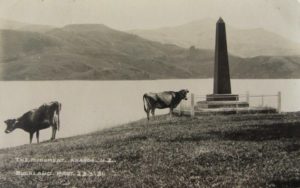 The Colonists also had New Zealand’s first Mayor, Pierre de Belligny, despite State History recording Wellington’s George Hunter as the first man with that dishonour. Captain Langlois became Commissaire du Roi, an acting Governor in anticipation of this new French capital getting its own Governor assigned and posted. Captain Langlois had the power to declare sovereignty over the South Island the same way Captain Hobson did for the English that same year.
The Colonists also had New Zealand’s first Mayor, Pierre de Belligny, despite State History recording Wellington’s George Hunter as the first man with that dishonour. Captain Langlois became Commissaire du Roi, an acting Governor in anticipation of this new French capital getting its own Governor assigned and posted. Captain Langlois had the power to declare sovereignty over the South Island the same way Captain Hobson did for the English that same year.
After the Aube, Akaroa was defended by another warship, Le Rhin. According to one of the crew, an artist, Lieutenant Charles Meryon, their duties were “tedious and boring.” This gave Meryon plenty of opportunity to pursue his etchings. However, the Rhin was deployed to beat the snot out Pacific Islanders. Likewise, the previous warship, Heroine, was sent to beat the snot out of Maoris in 1839. (Ever since Marion Du Fresne’s Massacre the French did not mess around when it came to showing strength to natives.)
“This cottage was built by my great,great,great grandfather Georges Fleuret, who came out from France with the first settlers.” Ref. comment, Ruth Eadie; Underground Overground Archaeology Ltd; Facebook (2016)
French administrators and captains, and sovereignty, came and went but George Fleuret the carpenter was there from start and until the day he died. The house he built for his captain still stands today.
Unfortunately, Fleuret didn’t live too much longer. He fell in love with an 18 year old woman, Elizabeth, and they had 4 daughters together who hardly had time to know their father when he died in 1847. I guess things didn’t work out too well for that broken family because at least one of them⁴ wound up a drunk and a prostitute, running a brothel out of the Maori pa when she wasn’t having run-ins with the law or serving time in prison. Not quite what poor old George Fleuret had in mind when he first dreamed of a home for himself in French New Zealand.
—
1 Not necessarily the local Maoris. It was quite within their capacity to find out where land purchasers were going, get there first, and appear to be local in order to be paid to sell that land to settlers.
2 ODD CHAPTERS FROM NEW ZEALAND HISTORY; Akaroa Mail and Banks Peninsula Advertiser (1878); Papers Past
3 New Zealand’s 4th ever defensive blockhouse was probably that of the Deans brothers, just over the Port Hills on the Canterbury Plains; Ref. The Whalers. By F. Maynard and Alexandre Dumas; Translated by F.W. Reed (1937)
4 Frances Adele
Ref. Georges Fleuret; Find A Grave
Image ref. Langlois Eteveneaux cottage, built in c.1843 by Georges Fleuret; L. Tremlett; Christchurch uncovered
Update 2021: Sorry to learn that my correspondent, author Peter Tremewan, died suddenly in May this year. The Akaroa descendants’ group has planted a tree for him and his wife in the Akaroa Heritage Park. And rightly so.
Update 2022: This post has become a bit of a focus for thinking about the Fleuret descendants which is fine by me. The following is an email sent to me by the late Akaroa scholar Peter Tremewan others will find useful…
| Subject: | Georges Fleuret |
|---|---|
| Date: | Thu, 12 Nov 2015 21:14:15 +1300 |
| From: | Peter Tremewan < > |
| To: |
Hi Rick,
27 thoughts on "1840: Akaroa"
Leave a Reply
 Like Comment Share
Like Comment Share

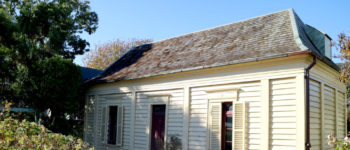




I would be interested in knowing where you got some of this information from – specifically about Frances Giles (nee Fleuret) who was my Great-great-grandmother. Also, as far as I know Georges and Elizabeth Fleuret only had 3 daughters – Frances, Georgina and Marie, although Elizabeth may have had more children from her second marriage.
Thanks for asking. I can point you to newspaper articles and the police report on Giles if you like. “Matron b.1853; Height 5’1; Swarthy complexion; Brown, curly hair; Blue eyes, long nose,…” There are indications of a 4th daughter who drowned in 1879. I’d be quite interested to learn from you what became of the surviving children.
Edit: Sorry, it’s the Giles girl who died in 1879. The 4th daughter you’re missing is Helena who was born before the French returned. Ref. https://www.findagrave.com/memorial/157140739/georges-fleuret
I see on NZBDM a 13 year old Elizabeth Fleuret death registered in 1859. I presumed this was a daughter. If not, where does she fit in?
Thanks for asking. According to a file Peter Tremewan sent me before his death…
Marie Elizabeth Fleuret (18 Jan 1847 – 1 Nov 1859) died in Christchurch as an “orphan.” Daughter of Georges and Elizabeth.
Keen to hear more about this family. Especially about what became of Frances Adele and her kids.
Looking at BDM I see Frances married a few times and looks as if she used her mothers married name for one marriage….? Given that you are aware of her Giles marriage, I wondered where the Rodgers name came from….I presume the 1864 marriage is her to and that is how she came to be a Rodgers.
This is as they are written on BDM
**NZBDM MARRIAGE:1860/3457 Frances Fluret m. Ugini Brunel
**NZBDM MARRIAGE:1864/3753 Frances Le Vaillant m. William Francis Rogers
**NZBDM MARRIAGE:1868/6614 Frances Rodgers m. Samuel Giles
I knew Frances was an interesting character but not that she was married 3 times! Wonder how she kept on attracting men. I’ve read that it’s French custom to marry using your maiden name not the name of previous marriage. Frances’s mother had done the same although she was a Scot.
Keeping with BDM, ‘Ugini Brunel’ re-appears (with a better writing pen?) as Eugene Brunel when he and Frances have 2 issue: Eugenie Ellen Brunel (1861) and Frank Brunel (1863.)
What’s going on here with this lady, her many children, and her disappearing husbands? After Giles she married a Smith! What do you think?
This is interesting. I knew Frances was married to Eugene Brunel before Samuel Giles, but not Rogers. I am told in family oral history that she married someone named Smith after leaving Samuel Giles but I have not been able to find any records of that. She must have had something going for her!
Actually, according to my scruffy notes from 2015, I did know about these marriages after all. Forgot.
What did she have going for her? Not land. George got sick and had to sell some of his land but was able to use some of the proceeds to clear the remaining plot. According to the prison report she wasn’t a very striking lady; “Swarthy.” Then again, a police description isn’t exactly the same as a casting bio for a modelling magazine…
Have added a new note to the post above about the marriages.
I would be interested in in learning more. I have since learned that there may have been a 4th daughter named Helene who was actually the firstborn – maybe conceived when Georges Fleuret first visited Akaroa on the Cachelot. There was a daughter who died aged about 12 named Marie Elizabeth. Frances was born in 1844, so who is it you refer to as being the “Matron b. 1853 etc.” Of the daughters of Georges and Sarah that I know of, Frances married Samuel Giles and had 4 children (my branch of the family) and one story I have had is that after leaving Samuel she married someone named Smith but I don’t know where or when. She seems to have disappeared from the family radar after leaving her children to be raised by a brother and sister in law of Samuel’s.
I have also heard that Frances was previously married to a German named (from memory) Eugene Brunel and had a son with him. I seem to recall hearing that he drowned when very young.
Georgina married a man whose surname was Bell but of them I know nothing apart from what can be found on the internet. Marie died young so no offspring presumably and I can find no other mention of Helena apart from the article I found on the net (maybe the Find a Grave website). But I have found a lot of internet info that is wrong and doesn’t fit with records that I have actually seen in Akaroa and the Christchurch Library.
I note that your name is possibly Rick Giles – is that coincidence or are you also a descendant? I would like to know more about who I am corresponding with and what your interest is.
Yes, that’s me. I step from one of Samuel’s younger brothers. Was looking into my family history but decided I needed more historial context. Got a bit side-tracked.
Yes, there was a James Smith for Frances later, and several children. When Frances went to jail her physical appearance was recorded but the DOB may not be correct. At that point the children were sent off to Industrial School. Father absent. I’m glad to see that some of them were welcomed in to the family at the 1900 funeral of Giles Snr and not left out in the cold. It’s at that point where I left the trail.
Please do write me an email. Very happy to share everything I know.
Is it possible that Helene became Ellen? Helen and Ellen are interchangeable in Scottish ancestry.
I work on Wiki Tree and that is how I ended up here. I had being working on descendants of Georgina Bell nee Fleuret. I only work on public record information so stop at those born 100 years ago. This is Georgina’s profile https://www.wikitree.com/wiki/Fleuret-33 and there is a green Descendants button which will lay them out more easily. These are primarily ‘placeholders’ for family and researchers etc to utilise and consolidate info.
Hi Kylie,
Yes, I think Helene and Ellen are the same person and from memory I think she might have been born aboard ship when Elizabeth was coming to NZ. I will try to check out more sometime soon as I am curious to know what Elizabeth Armstrong was doing in Akaroa before French settlement (maybe I don’t want to know!!!) The daughter of Frances and Eugene Brunel was drowned ‘at the head of the bay’ when she was a teenager. I don’t know if there were any children from Frances’s marriage to Rogers but there were 4 to Samuel Giles who all married and had children. I can’t find any info about her relationship with James Smith (?) or where she died. Where does your interest in the family spring from?
I was working on Wiki Tree profiles so no actual connection. I have not found children from the Rodgers marriage and it looks as if he died the year following their marriage. He seemed to have a Waimate connection. I have not found Eugene Brunel’s death. Eugene is the name used as father for the births. In another comment I gave a link to an article that claims there were 84 white men, women, and children when the French returned in 1840. Would be interesting if there was a passenger list for that ship or did that many really travel from Wgtn or elsewhere? I have not found the other Brunel child – Frank born 1863. The four Giles children seem to be tracked.
I’ll let you know if I find her James Smith marriage or anything. I see a lot of trees claim Frances died in 1930 but have no actual info.
Diane McNair/ dianemm38@gmail.com
Have just come across the article August 19 2020 between two persons interested in George Fleuret descendants.
I am from Elizabeth Armstrongs 1819-1852, line. Her daughter Ellen, 1839-1911,later called Helena, was common wife of Eugene Ditely 1819-1884 my Grear grandfather. Have spent years trying to work out Frances Fleuret tangle.
Elizabeth Armstrong married George Fleuret 1844 married 2nd
Francois Le vaillant 1846
dau Ellen Armstrong 1839-1911
step sisters Frances 1844-1930 Georgina 1845-1910 Maria 1847-1859.
Hope you can work out this.
Look forward from hearing from those who are interested in the family mixing pot/s.
Could you please email me an email address so that all our correspondence is not in the public domain. I would be happy to let you know what I have but you probably know more than me. I wish she had taken up with someone with a less popular name than James Smith. My grandmother always referred to ‘Samuels wife’ as ‘that French hussy’; my great aunt was more magnanimous and said her life in Little River with 4 young kids and a husband who was away from home for months on end (he was a contractor) would have been hard.
French hussy. 🙂
Yes, but he didn’t have to be a roading contractor did he? Strikes me he was escaping.
http://ahnz.anarkiwi.co.nz/contact/
Strikes me that you are making a big leap in assumptions, although to be fair, you do have information that I don’t. The Giles family, along with the Clothiers, imported traction engines from England and were into infrastructure development. So I guess Samuel just went where the work was as many men did back in those times.
I really would like an email address from you so that we can discuss this out of the public domain. It’s not that I am particularly ashamed of anything, in fact it adds some colour to what I have always thought was a pretty ordinary Methodist family. But I also value my privacy.
Well that’s my point. When your family business empire has so many connections and opportunities and state of the art new technology then there’s a place for you in it. Why’s Samuel off shoveling metal onto the back roads beyond the black stump?
If the contacts link above doesn’t work try the one at the foot of the page. Seems to be working fine for me.
I was told by a cousin, many years ago when I was quite young, that an ancestor of mine was the only European woman to have survived the massacre at Akaroa. If still single at the time her maiden name would have been de Carle. She was, I believe, of English/Canadian descent. Unfortunately my cousin has passed on. Now that I am in my 80s I am more interested in my ancestry and would like to find out more, if this information is available. My mother’s maiden name was also de Carle. Would appreciate an email of any info you may be able to give to;
Ron Wareham; email ronfam@slingshot.co.nz
Regards,
Ron
Thanks for asking. I’m fascinated about the international Banks Peninsula population prior to the 1830 Massacre and would like to learn more. Mainstream history says George Fleuret and his captain founded the French colony yet part of the draw was that Fleuret had become taken with a woman, Elizabeth Armstrong, who was ALREADY THERE! So Armstrong and de Carle were two ‘Pre-Adamite’ Akaroa women we know connected to this early history.
Canterbury, except in name, did not start with the Pilgrims of 1850 nor the Deans Bros of 1843 nor the Heriot-McGillivray 1840. I visited Akaroa museum a few months back and learned no more. Have also read Peter Tremewan’s book (French Akaroa (2010)) and corresponded with him on this point but it remains an important mystery to me.
Please count me in on your investigation. I don’t have any more leads. How did these women get to 1830s Akaroa? From where? How did they live? What, along with the massacre, must they have survived?
It is a while since we corresponded. Since then I have learned that Elizabeth Armstrong’s daughter Ellen was not George Fleuret’s daughter but either came to NZ as a baby or was born during the voyage out. Elizabeth was born in 1819 in Wigtown, Scotland and so would have been very young in Akaroa during those Pre-Adamite years. Who were these women and how did they get there. So curious!
I’m curious too. In Tremewan’s book (French Akaroa (2010)) he writes on page 164…”Georges Fleuret married a Scotswoman who had come to Akaroa with her young daughter.” I wrote to the author in 2015 and he suggested she may have wandered down from Wellington or something like that if I remember correctly. But that is far from satisfactory is it?
Lucy Ann returns to Sydney from Port Cooper with whale oil and bone in 1835 and “Almost immediately after this the may harbors of Banks Peninsula became the constant resort of whaling ships. Akaroa and Port Cooper being the main bases” according to. Canterbury Centennial Supplement (1940.)
I have also read that Lake Forsyth could be entered from the sea via whale boat up to 1830.
So we’re dipping into a time period here of which little is said. Probably because as far as our Pilgrims were concerned history began with themselves!
Ron, if your mother’s maiden name was de Carle then it suggests linage back to an 1830s Mrs de Carle. If that ancestor survived the Fall of Akaroa then she must have been part of the invaded group. She lived and her friends/family living with the Akaroa Maoris did not. As such any records she left would be valuable insights into those old times.
Seems to me that mercy was offered her, perhaps because she was pregnant. Unless she were taken back among the slaves to Kapati then I think she must have been under Captain J. Stewart’s protection on Elizabeth. As such, she ought to appear in the record in Sydney when Stewart returned their with his blood money cargo (flax.) Perhaps she fled with the captain when he dodged his trial? Or, remained in Sydney. At a later point in the next 100 years your family must have returned to New Zealand.
Someone should take a look on the Trove newspaper archive to see who was in the company of Stewart when he returned from New Zealand.
My mother was borne in England, coming to NZ on a world cruise when she met my father, a member of the crew of the HMS New Zealand, they were married in 1922. The only info that I have on the de Carle lady is that she was the only European woman to escape the Akaroa massacre, but I have no proof that this was so as this info was given to me verbally by a cousin when she was visiting NZ in the 1950s and I was only a teenager and not overly interested in ancestry at that time. Other information that I have on the NZ de Carle family was given to me by a relative who visited NZ a few years ago and states; the de Carle Lectures result from a generous bequest to the University of Otago in 1946,from Miss Edith Isabelle de Carle of Dunedin. The bequest is used to bring distinguished scholars in the Humanities to the University of Otago for periods of between two and six months during which they provide a short series of lectures open to the public.
Susan, Lady Satyanand, wife of the then Governor General of NZ, is a relative of the de Carle family.
The info is dated 29th March 2010
It seems likely that Edith would in some way be a relative of the Akaroa de Carle family .
It’s very exciting stuff and I wish we could shake out some more leads. Have included what was told to you in my latest post. Ref. http://ahnz.anarkiwi.co.nz/1830-slaughter-by-surprise/
My view is that any such woman who survived the Akaroa Massacre would either have been extracted to Sydney with Cap. Stewart or else to Kapiti for one of Rauparaha’s 5 vassal whaling stations. Ref. http://ahnz.anarkiwi.co.nz/1823-seizure-of-kapiti-island/
Stewart returned with his blood money (flax) to Sydney on 14 January 1831. Mentioned as passengers are Kemiss and Montefiore but no woman. Ref. The Sydney Gazette and New South Wales Advertiser (NSW : 1803 – 1842) https://trove.nla.gov.au/newspaper/article/2198529?searchTerm=Elizabeth%20zealand%20flax
Seems to me your relevant ancestor would be your grandfather’s mother. James Irwin De Carle has the name of a man sent to Pentonville for 5 years after being convicted of fraud (“..ledger clerk to Mr. Bohn, the well-known publisher,..” Morning Post (1867)) in 1867. Your James (1843 – 1899) would need to have a mother who had a New Zealand adventure before settling in Norwich. Maybe it was as DeCarle or maybe it was prior to marrying your great-great grandfather. If we knew her name we could search by it and see if she did indeed show up in Australia and New Zealand. Do you know?
https://www.ancestry.com.au/genealogy/records/irwin-de-carle-24-pl3gs?geo_a=r&o_iid=41019&o_lid=41019&o_sch=Web+Property
I see there were 84 white people already there when the Comte de Paris returned in 1840. Where did they all come from?
https://paperspast.natlib.govt.nz/newspapers/LT18890917.2.64
They’re the thriving Anarchists of New Zealand who came to seal and whale. Hobson only came to rule people who were already here. The French were to find that 9 other parties also contested their rights to Akaroa harbour.